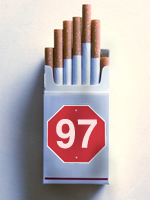Foco e Disciplina
Vivemos reclamando da falta de tempo no nosso dia.
Mas quanto tempo e energia perdemos procrastinando ou nos auto-sabotando?
Aprenda gerenciar melhor seu tempo e aumentar sua produtividade (Link)
Existem muitos documentários ruins, mais propagandistas do que Michael Moore, e sem tanto pathos e gravitas quanto ele. Em geral, são exageros conspiratórios e sensacionalistas. Estes poucos documentários que citarei aqui podem ter um viés político, e é possível arrazoar contra eles ou certos fatos que eles mencionam.
Mas, de forma geral, não são de forma alguma documentários lunáticos, como por exemplo o documentário Zeitgeist – que se trata de uma mistura “agitprop” de astrologia, teoria da conspiração, fatos distorcidos, e, principalmente, semelhante pelo menos em espírito ao velho “Protocolo dos Sábios de Sião”, o documento/propaganda antissemita que circulou na Europa no início do século XX.
São documentos importantes de questões importantes, que todo mundo que gostaria de falar sobre política, nem que seja em conversa de bar, precisaria estar ciente.
Link YouTube
Documentário canadense seminal, um pouco longo, com quase duas horas e meia de duração, analisa o comportamento da “pessoidade corporativa” por meio de um conhecimento manual psiquiátrico, e as diagnostica como psicopatas.
O documentário analisa a origem histórica da noção de “pessoidade corporativa” (expressão que parece não possuir tradução definida em português), e expõe com clareza e dinamismo uma argumentação cogente e impactante com relação a esse problema.
Quando escrevi “A inútil luta com os galhos“ aqui no PapodeHomem, eu presumia que todos já haviam assistido a esse documentário. Muito me surpreendeu a surpresa de algumas pessoas quanto a argumentação central do texto – e talvez tenha faltado enfatizar naquele texto esse que esse é, talvez, o documentário mais importante dos anos 00.
Em The Corporation, não há nada do sentimentalismo e demagogia que muito frequentemente ocorrem nos documentários de esquerda de Michael Moore. É claro que possuem seu valor, mas o argumento se enfraquece com o uso do que eu consideraria “golpes baixos” (o pior deles, talvez, o assédio a um Charlton Heston senil, em Bowling for Columbine). É porque exatamente aprecio as críticas de Moore e estou totalmente de seu lado que acho que, algumas vezes, ele não é hábil e acaba soando muito como mera propaganda.
Esse definitivamente não é o caso de The Corporation.
Uma explicação para o comportamento “emotivo” de Moore ser efetivo é que a esquerda, nos EUA, é identificada com intelectualismo, com o elitismo intelectual. Assim, Moore é um pançudo com uma cara não muito esperta, que não chega a ser um caipira, mas talvez algo como um encanador.
Esse é um apelo muito inusitado para a esquerda, já que a direita coopta a visão do empreendedor prático e com esperteza das ruas, nada intelectual. Talvez venha daí algo de sua eficácia em seu país.
O mais efetivo dos documentários de Moore é Sicko, sobre falta de uma rede social de auxílio de saúde nos EUA. Este é um dos temas mais tensos por lá ainda hoje, com o Congresso de maioria republicana já tendo votado para derrubar o ObamaCare mais de 40 vezes.
Esse tema da política de saúde é muito próximo de nós aqui no Brasil, mas os problemas são tão diversos nos dois mundos que o documentário perde um pouco seu apelo para nós. O mesmo ocorre com Bowling for Columbine, já que nosso problema de violência também é diferenciado.
Capitalism, A Love Story, Roger e Eu e Fahrenheit 9/11 são também bons documentários, todos com os defeitos que apontei, de sentimentalismo excessivo, cara de propaganda e golpes baixos — e o primeiro, talvez, com uma simplificação excessiva. Ainda assim, são importantes veículos do pensamento popular atual, possuem seus bons momentos, e ninguém deve deixar de ver.
Link YouTube
“Por que lutamos?” — quem, no caso: os estadunidenses. Qual é a resposta? Porque as corporações armamentistas mandam no governo.
O documentário começa e termina com uma fala do presidente Dwight Eisenhower advertindo, nos inocentes e plenos anos de Guerra Fria (1961), que o governo corria o risco de ser tomado pela pressão das indústrias fabricantes de armamento. Você pensou que era só petróleo e geopolítica e segurança nacional? É porque a guerra, em si, por qualquer motivo, é lucrativa para as corporações.
“Os Estados Unidos vivem de uma tensão entre capitalismo e democracia, e o capitalismo parece estar ganhando”,
resume Charles Lewis.
Link YouTube
Outro documentário extremamente bem feito, que analisa as distorções e o sofrimento humano produzido por outro setor corporativo, o da indústria alimentícia, e como ele está prejudicando nossa saúde e criando alimentos cada vez mais “viciantes”.
O documentário mostra uma vasta engenharia em movimento para fazer dinheiro explorando nossas pequenas fraquezas.
Link YouTube
Se as corporações de alimentos, armas, farmacêuticos e a Monsanto são grandes vilãs, o que dizer então dos grandes monstros do setor financeiro?
Inside Job explica, da forma limpa e extremamente bem arrazoada do Corporation, como a crise de 2008 veio a ocorrer.
Link YouTube
Bill Maher recentemente falou em seu programa seminal, Real Time, que só agora estamos acordando para o que Ralph Nader e alguns outros poucos estão martelando desde os anos 70.
Está na hora de deixarmos de achar que proteção ao consumidor e regulação são apenas “assuntos chatos”.
O documentário traça os esforços de Nader, numa longa carreira enfrentando lobbies poderosos — por exemplo, na comissão que exigiu o cinto de segurança. Novamente, histórias de horror sobre manipulação das corporações e o cálculo frio de um recall versus um número de indenizações por morte — dessa vez na indústria automobilística.
As vidas humanas tem um preço muito claro e simples, e se por acaso for mais caro salvá-las, que morram.
Link YouTube
Esse documentário, do mesmo diretor do The Corporation, examina a mais bem articulada e prolífica mente da esquerda em língua inglesa, Noam Chomsky.
O filme foi criticado por Chomsky, por passar certa ideia de culto em torno dele. Mas se você não está disposto a ouvir centenas de horas de palestras de Chomsky, ou ler vários de seus livros sobre política (nem entremos na linguística), e gostaria de entender um pouco melhor da situação hoje, essa é uma boa introdução.
Uma dica para evitar bobagem em termos de documentários e outras coisas é examinar o artigo da wikipedia em inglês. Lá verificamos se o tema é controverso, se a página foi fechada com um cadeado, por exemplo. Lemos a sessão de críticas, e examinamos o embasamento dessas críticas e de onde elas vem (de diretos interesados, de pessoas sem qualificação na ára, etc) — caso ainda estejamos em dúvida, seguimos a sessão “talk”, onde são discutidas as atualizações, e onde algumas vezes ocorre um debate sobre o tema. Isso raramente é necessário, basta ler o parágrafo inicial e algumas das críticas, que em geralmente já dá para reconhecer a respeitabilidade de algo.
Esse filtro pode não ser perfeito, mas sem esse filtro, perderemos muito tempo.
Michael Moore
Nota do editor: cá estão os documentários do cineasta cotados pelo Eduardo Pinheiro no começo do artigo.
Tiros em Columbine
Link YouTube
Sicko
Link YouTube
Capitalism: A Love Story
Link YouTube
Fahrenheit 9/11
Link YouTube | Versão completa, dublada. A versão legendada não pode ser embedada, mas dá pra assistir direto no YouTube. É só clicar aqui
Roger e eu
Link YouTube | Esse, apenas o trailer




































